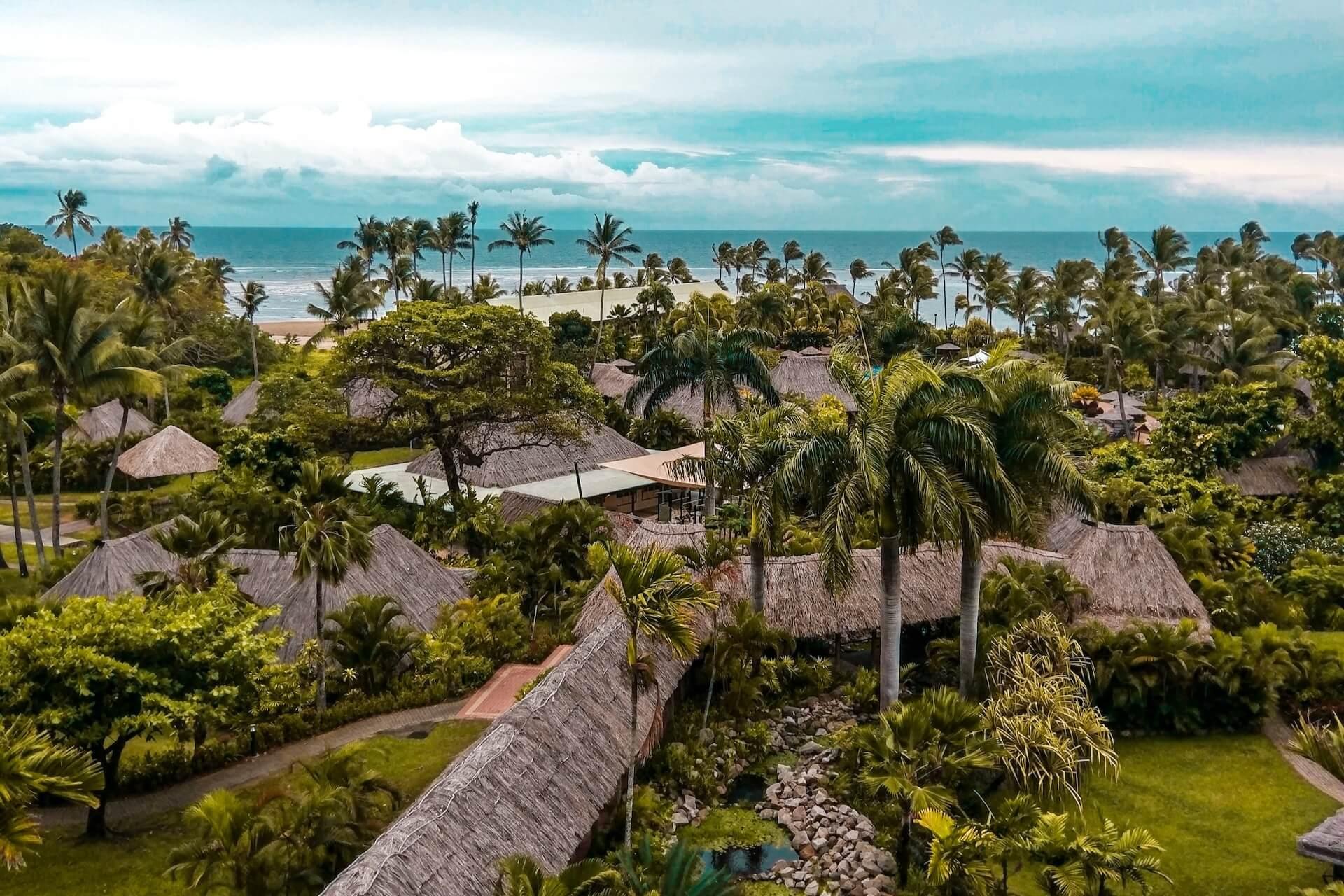
Fiji: the islands of the god Degei, where life has not yet lost its order

Fiji: the islands of the god Degei, where life has not yet lost its order
Back in the 19th century, you could have been a victim of cannibals in the Pacific archipelago of Fiji, but today the islands are best known for their white beaches and azure ocean. Less is known about their remarkable culture, which blends indigenous animist traditions, Christianity and Hinduism. Have you ever tried the euphoric effects of kava or brought it to a village chief in the form of a sevu-sevu?
A whiff of the old days
Our journey took us east to lesser-known places from the small port of Natovi by a ferry full of children in green school uniforms towards the island of Ovalau to which a number of smaller islands of the Lomaiviti group are adjacent.
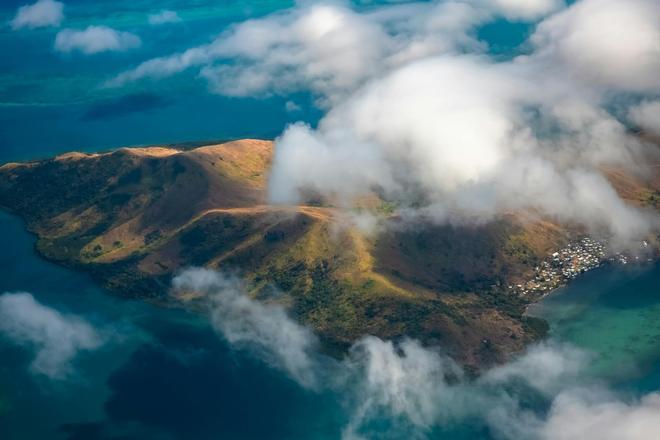
Ovalau is the largest of this group and is particularly charming for its colonial architecture of the town of Levuka with its many colourful shop fronts and restaurants like something out of a Hollywood western. It is here that you will be greeted by a local mix of Fijians, Indo-Fijians (brought in as cheap labour during British colonial rule), Chinese and a handful of often quirky adventurers from Europe. They have settled here and regularly meet over a drink at Whale's Tale restaurant, where you can also eat very well, and especially sample the various types of fish.
Levuka is the former capital of Fiji, which has been on the UNESCO list since 2013, and we stayed here in the Royal Hotel, which is not exactly royal, on the contrary, it is very shabby and the walls are a bit grey. However, it still evokes an old-world 19th century atmosphere, dating right back to 1860, making it the oldest hotel in the South Pacific. It's very cheap and has a family atmosphere.
The indigenous Fijians are Christian (mostly Methodist). The main religion of the Indo-Fijians is Hinduism. The villages are still (at least formally) headed by a chief who is responsible for e.g. leasing land or resolving major disputes in the community, a position that is passed down from father to son.
Rural Fijians bury their dead near their own dwellings and decorate fresh graves with colourful streamers, probably still linked to animist traditions.
The islands were settled more than 3,000 years ago, with the first inhabitants of Fiji coming from Southeast Asia, long before the first contact with European exploration expeditions in the 17th century. On February 20, 2016, Tropical Cyclone Winston, the strongest recorded storm in the history of measurements in the South Pacific, hit the archipelago.
Upon arriving in the dimly lit reception area full of huge pieces of old English furniture, you first have to ring the bell and wait patiently for a few minutes before an old man in a long skirt walks in at a very slow pace and greets you with a toothless smile. But you will feel really at home here. You can also step back in time in the adjacent streets, the Church of the Sacred Heart with its tall stone tower, where giant zebra mussels serve as bowls for holy water, and the former Catholic mission school with its guardian angel statue in the courtyard.
We also explored the local history and architecture of Levuka at the small local museum and library, finding copies of period photographs of my aunt's grandfather and fellow traveller Miriam František Jira. He arrived in Fiji around the last decade of the 19th century via Australia, settled in a place called Naussori on the Rewa River and owned sugar cane plantations there, including a sugar mill, but unfortunately these sites have not survived.
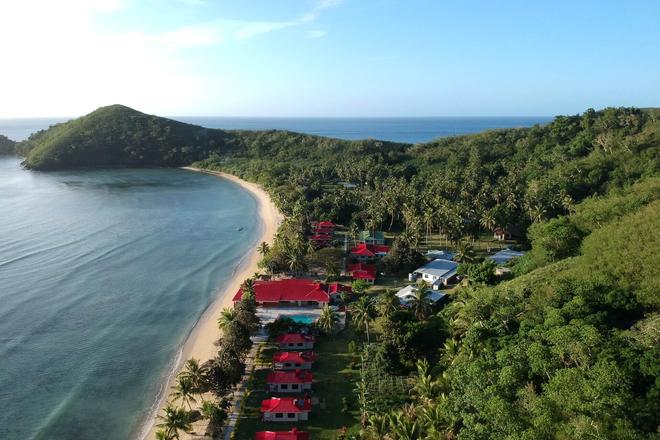
The Little Jesus of Prague in a tropical paradise
We came across another trace of the Czech Republic in the church boarding school with the church of St. John, located near Levuka further down the coast. In addition to a number of classrooms, accommodation and small fields, here you can meet a smiling nun, Sister Makelesi, who took our arrival as a special sign. After we told her we were from Bohemia, her face lit up even more and she led us into a small, simple prayer room.
There, on top of a low improvised altar, sat the Little Jesus of Prague. We didn't learn the origin of the worship of this sacred statue in the Pacific from Makelesi, but instead we enjoyed tropical fruit and peanut butter spread.
On the way back, we were accompanied by two students from the dormitory. At the time of the school's founding at the turn of the 19th century, it was mainly the sons of local chiefs who were educated here, and in recent decades, children from different social classes, both boys and girls, for whom primary schooling is compulsory.
There is a beautiful walk around the island along the coast, but you can also use trucks for transport, where wooden benches are placed on either side for seating instead of cargo under a tarpaulin, so long as you hop in early. Otherwise, you'll have to hold on to the hull on roads full of potholes and you'll be glad if you don't fall out while driving. This mode of transport is the most used on the islands, and specifically on Ovalau there is one bus in addition to this, and it runs in the early morning and then in the later afternoon, used mainly to transport school children, but also to deliver various supplies and household goods from the main island of Viti Levu. Not everything can be procured on the smaller islands.
The ritual of kava in the hippie community
From Ovalau, my new companion James and I got on a speedboat that took us to the picturesque coral atoll of Caqalai. Around it, the ocean is really azure at this time (the water isn't that clear on the bigger islands). Accommodation in Eden is set up at a decent price by a group of Methodists. They regularly attend Sunday services on the neighbouring island, but otherwise the whole area and the island's operation is more like a hippie community. Time passes very slowly and is only interrupted by the regular supply of food and the wind rustling in the high palm trees, as one of the local smiling young men, Nassa, says: "Fiji time..."
In the early evening, the whole community gathers on the terrace near the spacious dining room and smokes marijuana to the strains of Melanesian music, later moving inside to begin the ritual of drinking the traditional drink kava (Yaqona), prepared from the crushed root of the pepper tree (Piper methysticum), which is first steeped in water wrapped in a cloth bag, and then ceremoniously poured into traditional bilo bowls, which are clapped once after receiving the bowl and three times after drinking it.
The Fijians believe that the sipping has a spiritual dimension in addition to its antiseptic and euphoric properties, the pepper tree is supposed to impart its power to the participant in the ritual, the participant's legs should be crossed during the entire sitting and the women should sit behind the men, but apparently not everything is observed... Kava will pleasantly relax you and lull you to sleep along with the sound of the Pacific Ocean.
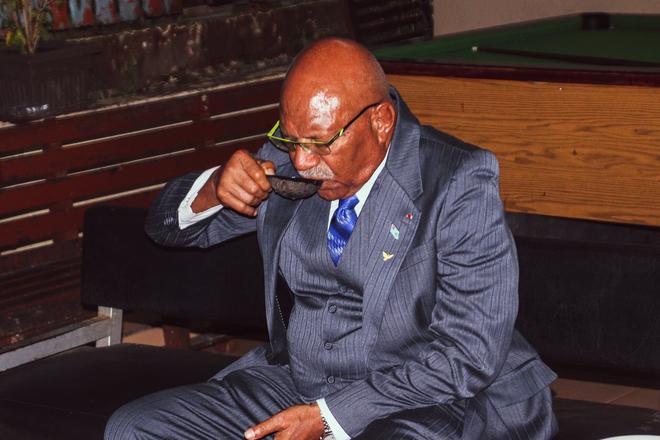
The Princess of Tonga and Snake Island
Another young man staying on the island of Viliame tells me a legend about the origin of kava: "Kava comes from the clay of the grave of a Tonga princess who died of unlucky love. Another legend says that on the island of Vanuatu there was a hero with superhuman powers who hid Yaqona on a piece of land among the rocks. The root of the plant was then discovered by the local women while cultivating the land, it was also a phallic symbol for them and they began to cultivate it further..."
In myths, kava is often said to have come from noble or spiritual beings who brought it to mortals as a life-enhancer. In any case, its drinking is still widespread today, even without a ritualised form, for example at a bus station or on a boat, when the mystical touch disappears and only the intoxicating effect remains.
On the island of Caqalai, traditions are still observed and one either joins others in the relaxed and peaceful atmosphere with storytelling or listens to the music, the night birds singing and the sea surf in a good mood. Kava is also used as a gift called sevusevu to the village chief if you ask for input and a visit, which is always useful to know and can also be bought as an inexpensive and interesting travel gift.
There is a small island near Caqalai which can be reached on foot at low tide, otherwise it is inaccessible and overgrown with bushes. A single palm tree stands proudly on its top, it is called Snake Island, and according to legend it was created when one of the giants that lived in the Pacific before humans took a piece of dirt from the ocean floor and threw it on the surface. No snakes live on it today, and it is surrounded by beautiful coral reefs.
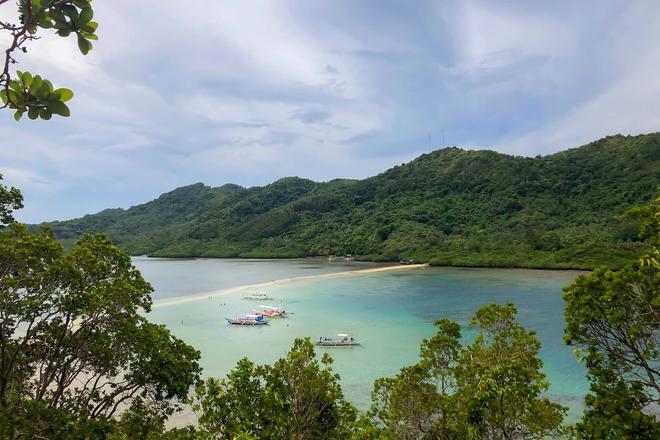
There are colourful fish, water turtles, and some sharks, but they are not dangerous. The adjacent waters are ideal for snorkelling and diving, where you can also take advantage of the services of a local instructor. The name, derived from the snake, is popular in Fiji because in the original pantheon of deities, the snake god Degei holds the highest place; according to legend, he is the creator of the entire archipelago and also judges the souls of the dead after death.
Peaceful Sunday afternoon at Moturiki
A stone's throw away is the island of Moturiki, where the local population regularly visits friends and attends Sunday mass. On the idyllic island there is a village with traditional buré dwellings, the housekeeper often peeks out of the door preparing a meal, men lie across the threshold resting after fishing, and children play all around.
There are few places in Fiji where you can see rural life so unspoilt by civilisation and away from the tourist trade, and there are also interesting beaches around the island where you won't bump into anyone. You can also see the processing of the pepper tree for the subsequent drinking of kava, its roots are dried between the houses and then pressed in a mortar-like container.
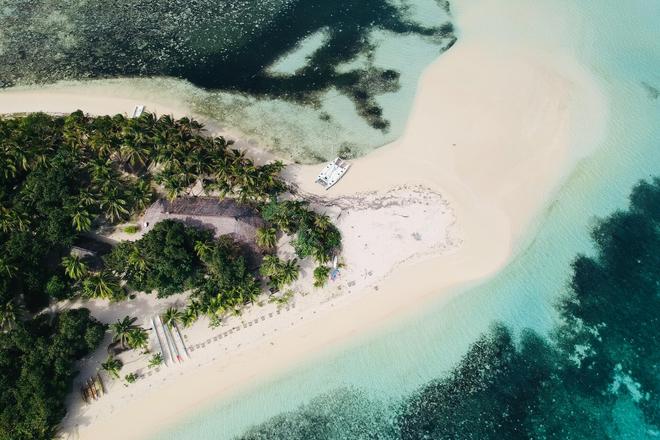
Volunteers protect the ocean and traditions
It is a shame that Fijian legends, and with them local traditions, are slowly disappearing thanks to globalisation and mass tourism. Similarly, the old shops and stylish hotels of colonial times are being eroded by the ravages of time and slowly giving way to new hotel resorts. Even so, it is still possible to find places where tourists are rare, history is reviving and nature is almost intact.
Voluntary organisations are also trying to maintain this trend. In Caqalai, for example, we came across a couple of volunteers from Global Vision International who, among other things, are involved in environmental activities including ocean conservation, teaching in schools, and trying to promote local traditions. Similar foundations include Vinaka Fiji and the Yasawa Trust Foundation. You can support them in their work, but if you travel with respect for nature and the local people, you will also enrich each other.
As an elderly French lady living near Levuka with her Fijian husband said, "Life here has not yet lost its order compared to Europe, it's simple, it still flows at its peaceful pace from dawn to dusk, I wouldn't want to change..."